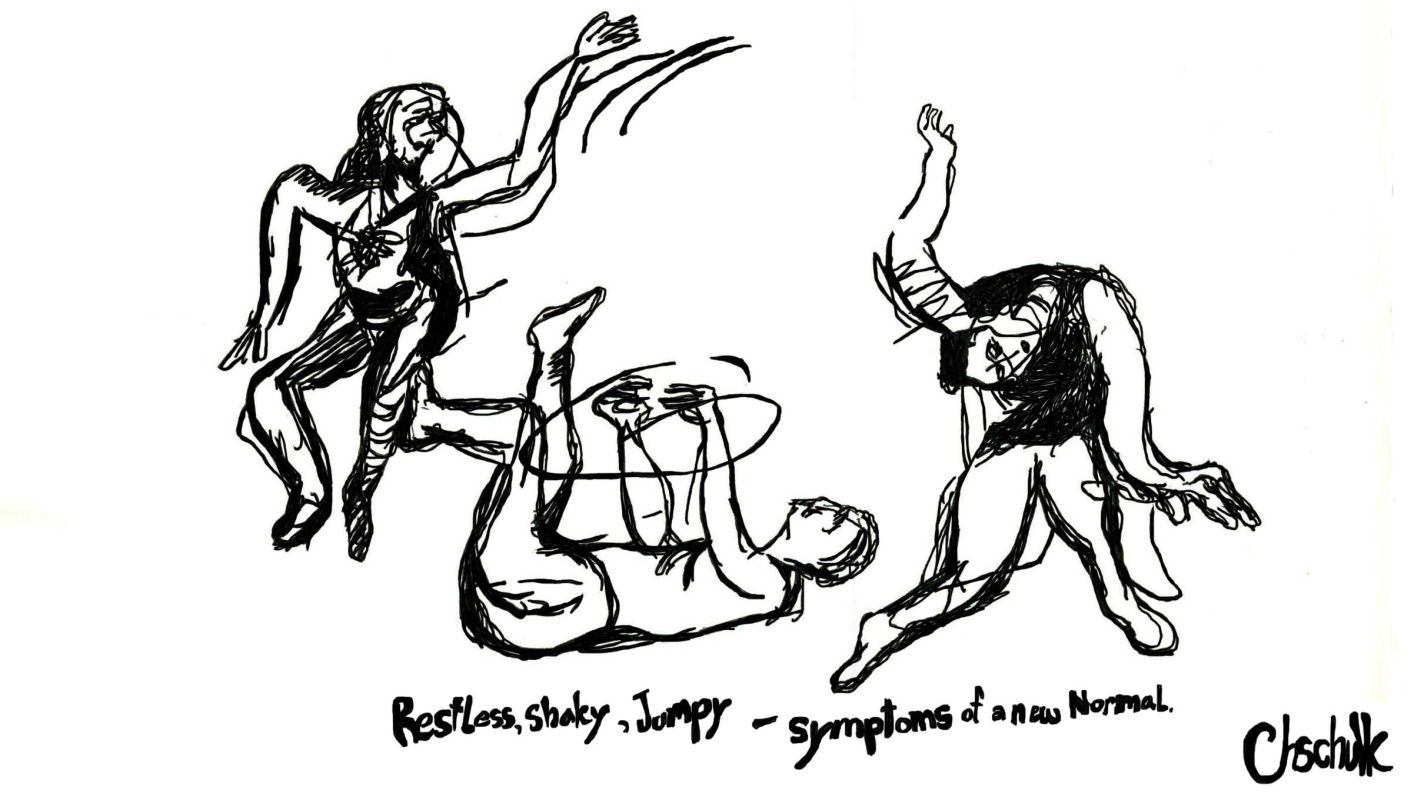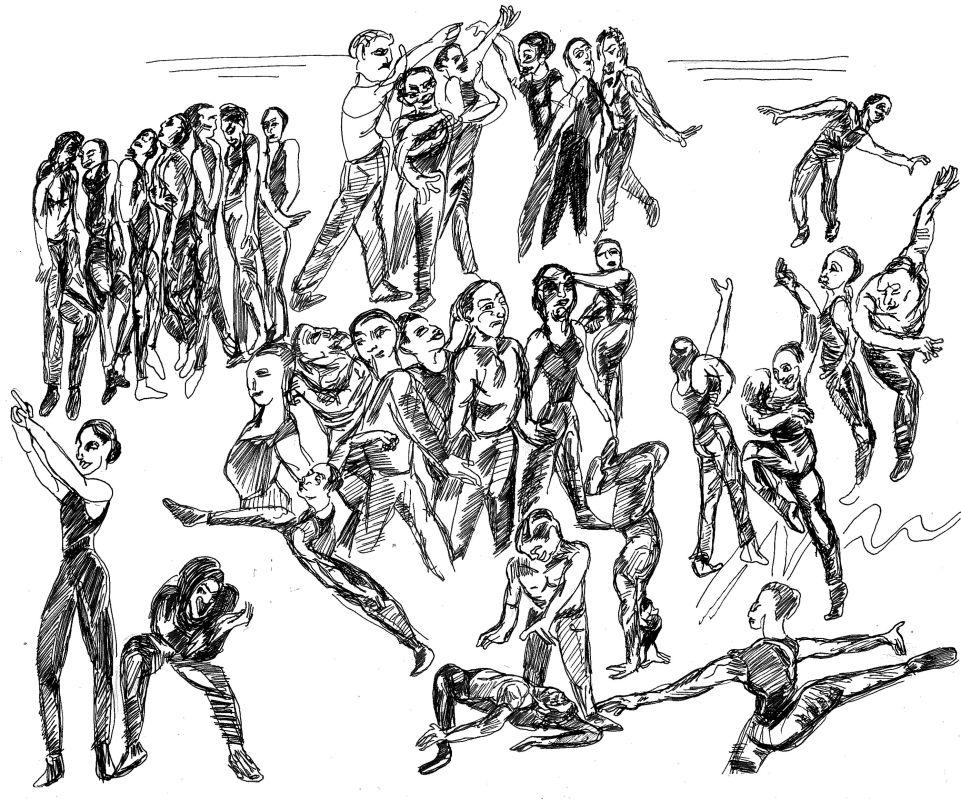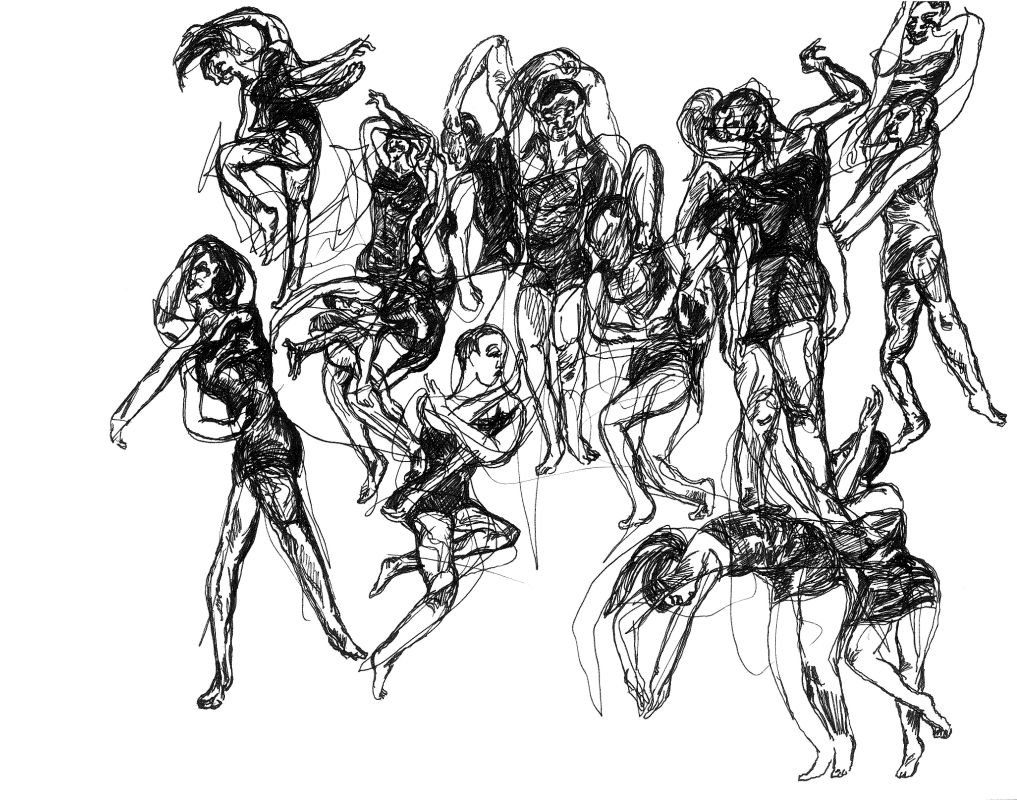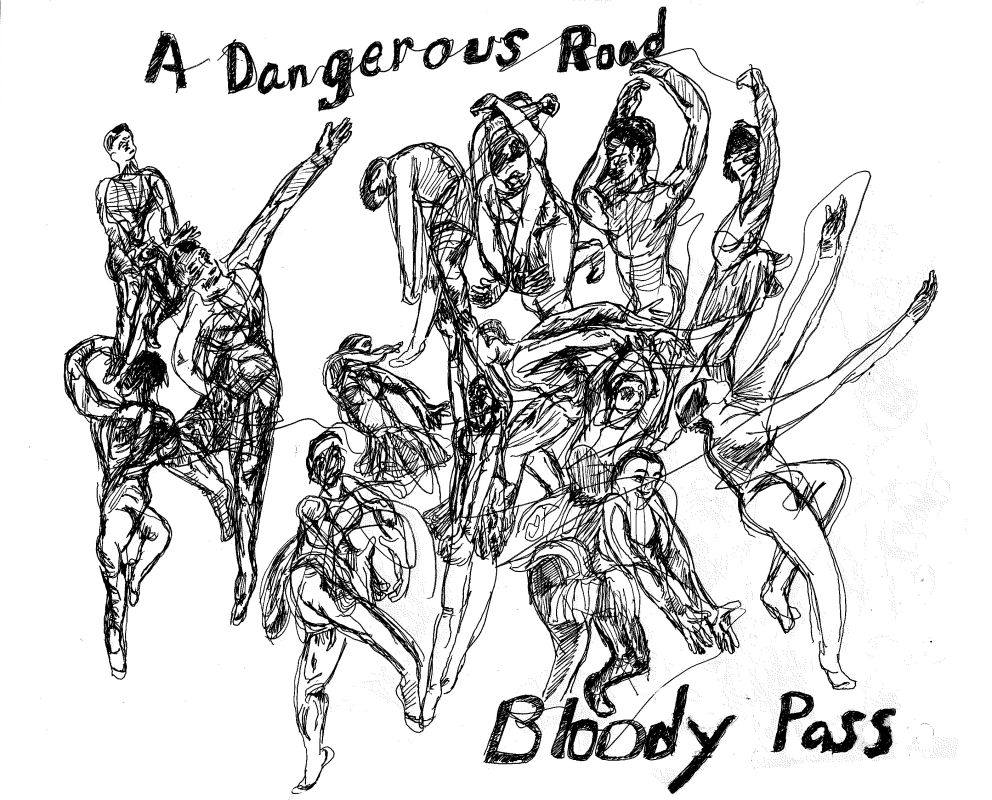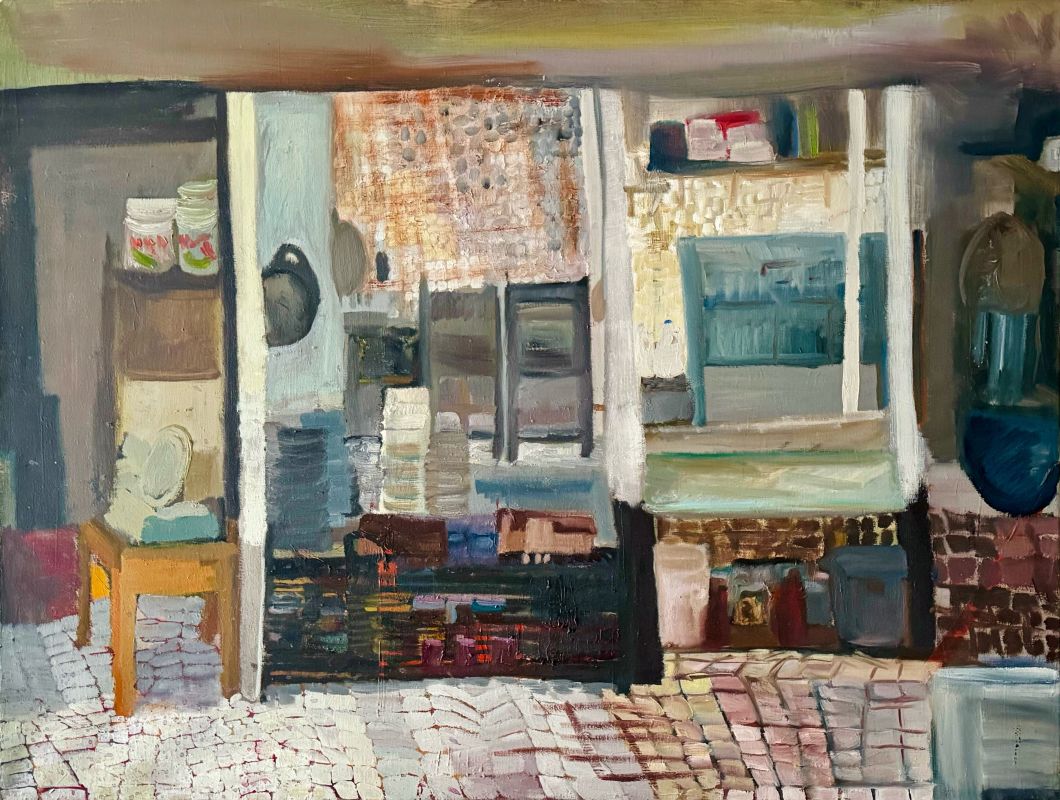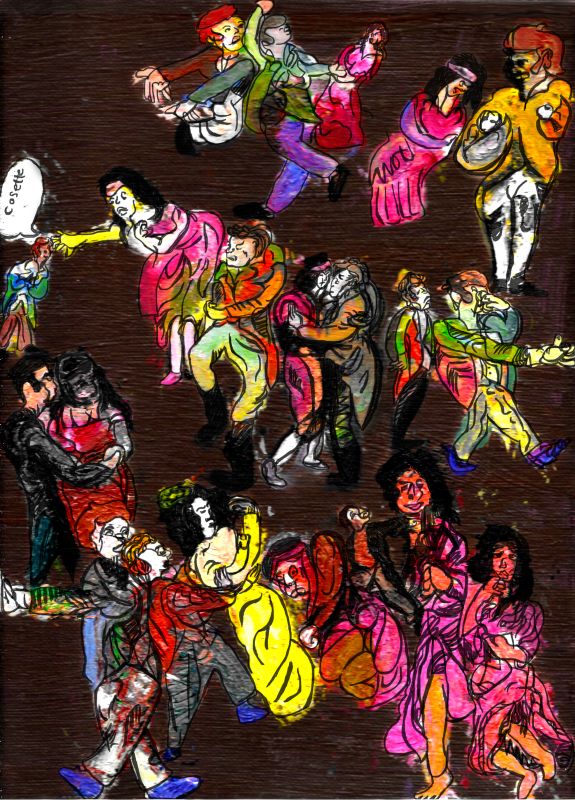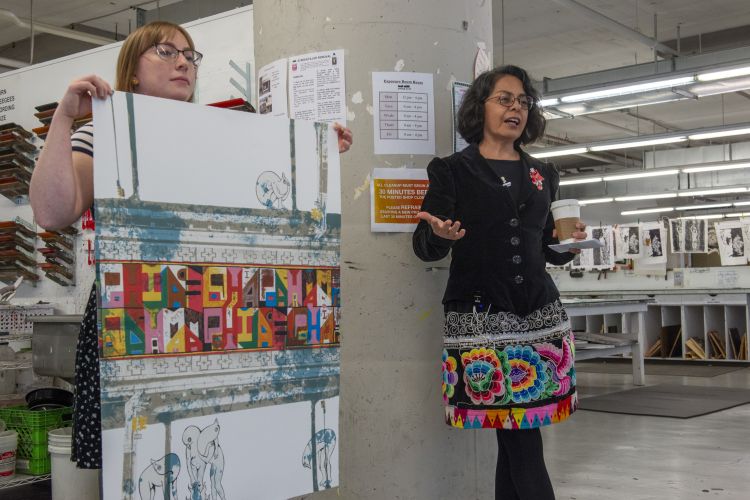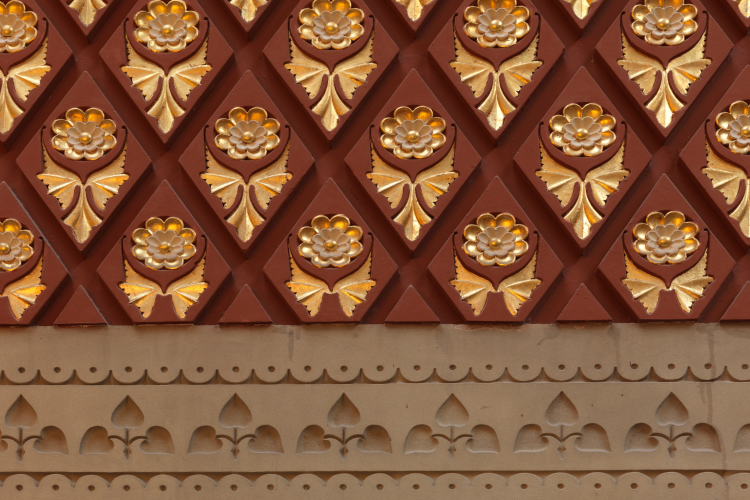STORIES FROM PAFA
Show Sketches: In the Audience with Chuck Schultz
Edgar Degas's quote, "Art is not what you see, but what you make others see," implies that the true essence of art lies in the artist's ability to convey their unique vision and evoke emotions or thoughts in the viewer. Artist and #PafaAlum Chuck Schultz (Cert ‘13) understands the sentiment as a live sketch artist of theater performances, "It is not just about what the artist is thinking, but how the audience is perceiving it too; it is the full picture lens of the art and the audience." His perspective underscores the symbiotic relationship between artist and audience, the idea that art's impact transcends the artist's vision to encompass the viewer's interpretation and engagement.
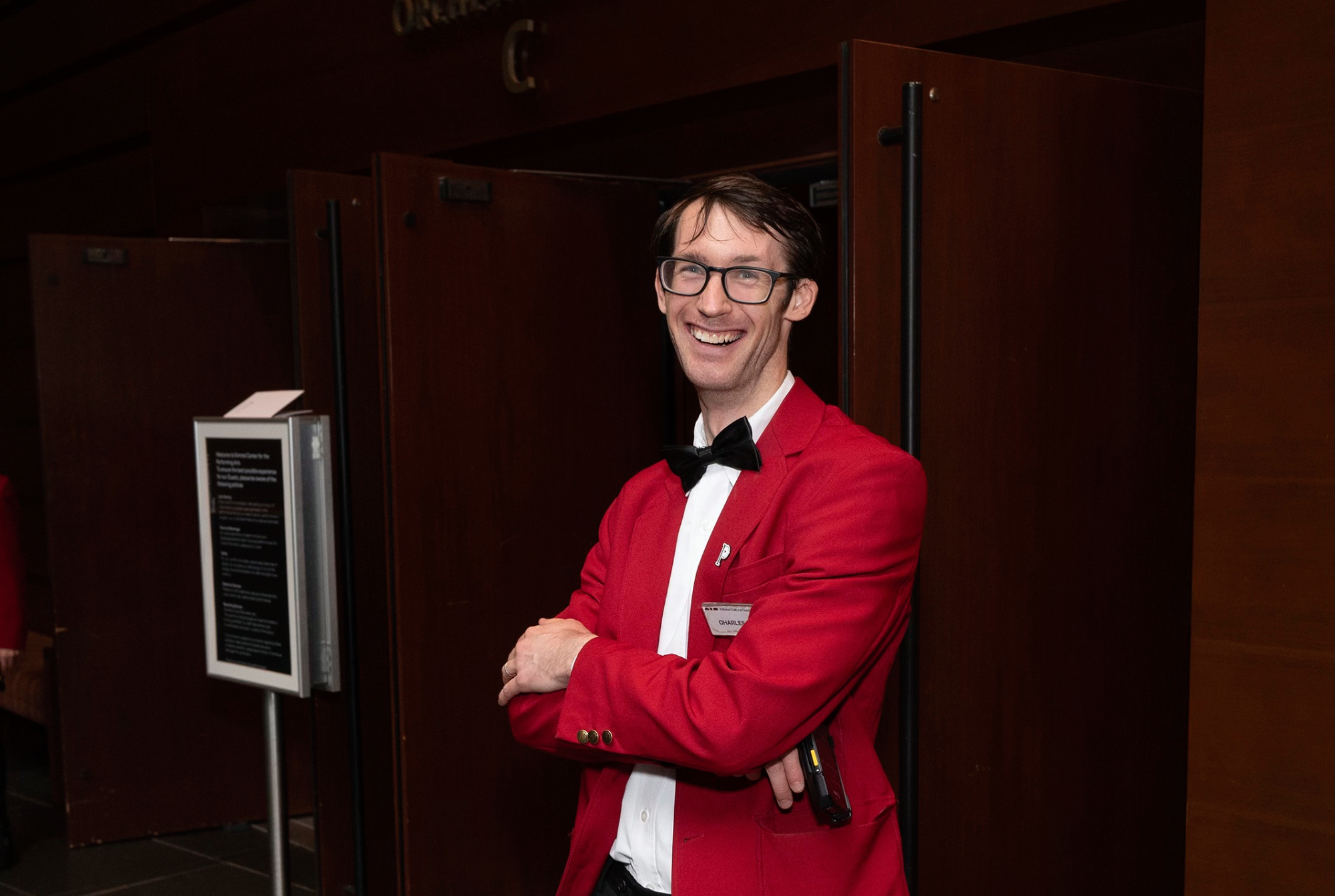 Chuck Schultz, Kimmel Center Usher, headshot, photo credit: Edward Savaria Jr. | 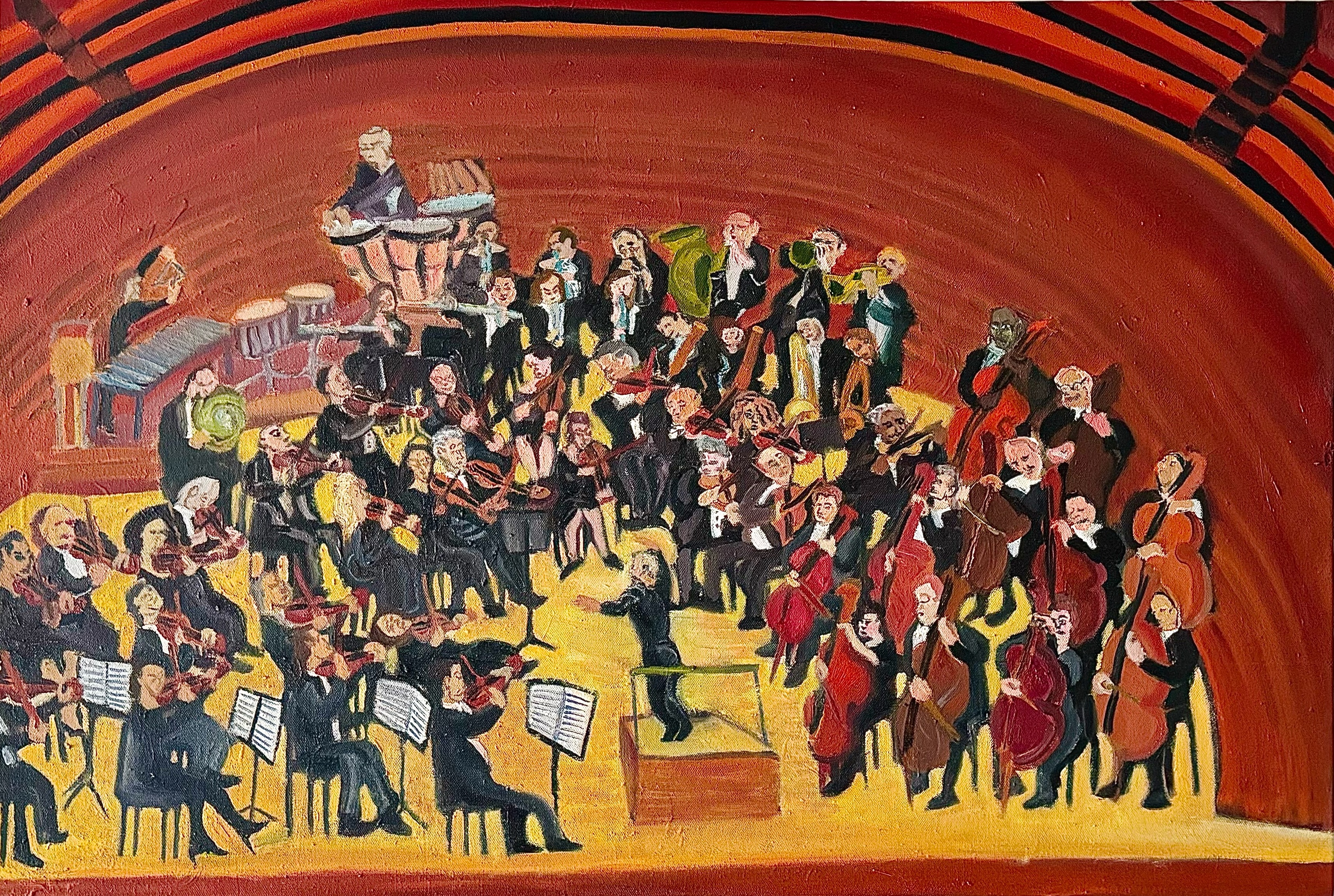 PhilaOrchestra, 31"x 46", oil on canvas, 2020 |
“I have never been NOT inspired by a show to draw, like a blind person, who cannot read without touching the braille. I just have to touch it.”
Chuck's fascination with live theater is evident in his renderings of these performances through quick sketches, using a technical pen and ink washes or simple acrylic paints, that he later refines. He received an award early on called the Best Audience Review from the Dance Enthusiast, an open forum for writing about dance, which recognized his visual reviews. “I appreciate the people I am working with, even though they don’t necessarily know we are working together, while I am immersed in the audience to respond to the art.”
Chuck pursued a fine art degree at the Delaware College for Art and Design (DCAD), and then moved on to Philadelphia to study at PAFA. He recalls attending a class with Scott Noel at PAFA, where Noel asked, “What are we looking for?” and he answered, "hands and feet." Reflecting on his time at PAFA, Chuck remembers the first attempt to draw a live dancer. He tried to follow her movements but couldn't capture them as he does now. His experience at PAFA, the people he met there, and its "bohemian" lifestyle profoundly influenced both him as a person and his artistic development.
“PAFA was more critical and we felt like we were on view, like a social experiment of putting all these artists together working in art studios in one building, to see how they interact. It was a lot like the narrative of RENT, an emotional show of familial relations of individuals unrelated, but close like family….The critics played a huge role, like the late, Moe Brooker would always leave my art studio saying, 'I’m gone,' or Celia Reisman, would always take my glasses and clean them for me. The bohemian style is the communal arts, being in a community, and the influence of each other.”
Then Chuck met Katherine Weber, who introduced him to philosophy and theater and encouraged his ability to choose and curate what was most important to the shows he wanted to draw. This led him to explore different dimensions of his artistic practice, emphasizing the importance of the audience in his work. He also acknowledges the influence of Judilee Reed, President of the United States Artists Organization, and Eric Fischl, whose contemporary paintings reshaped his views on realism and impressionism and, he notes, "told me artists aren’t that crazy, and to document the world can be very weird."
While at PAFA, Chuck underwent significant life changes and overcame challenges within his Bachelor of Fine Arts program at the University of Pennsylvania. The rigorous academic environment at UPenn taught him valuable lessons about genre-specific writing and the importance of staying true to one's artistic voice. Chuck reflects:
"I realized what I am not, and that which I am. It was important to take a step back and fully appreciate it. It’s great to be immersed in it, but take a step back and to take an objective perspective, rather than the subjective perspective.”
Chuck’s artistic influences are diverse, including dance companies like Kun-Yang Lin/Dancers and Anne-Marie Mulgrew and Company. Anne-Marie, working press for Next Move Dance, was an early inspiration and invited him to do his reviews for Phindie. Writing holds significant importance for him, as it bridges the gap in communication between visual art forms and how people interpret them, and says something about our perception of the world.
Chuck's journey into art criticism has been shaped by encounters with various art critics, particularly influenced by writers like Peter Schjeldahl from the New Yorker, known for his distinct personal voice. During the Pandemic he wrote on Velasquez’s “Las Meninas,” and how the paintings are all by themselves in the museum without the viewer, and what that means to our culture.
Chuck's involvement in the art community extends beyond his personal practice. "A typical day in the life," he describes, "involves running around the city, ushering for the theater, or working security for the Art Museum. I also do some church restoration." His various engagements highlight his dedication to maintaining a connection with the artistic community. He participates in art auctions and fundraising events, preferring the publishing world over commercial exhibitions.
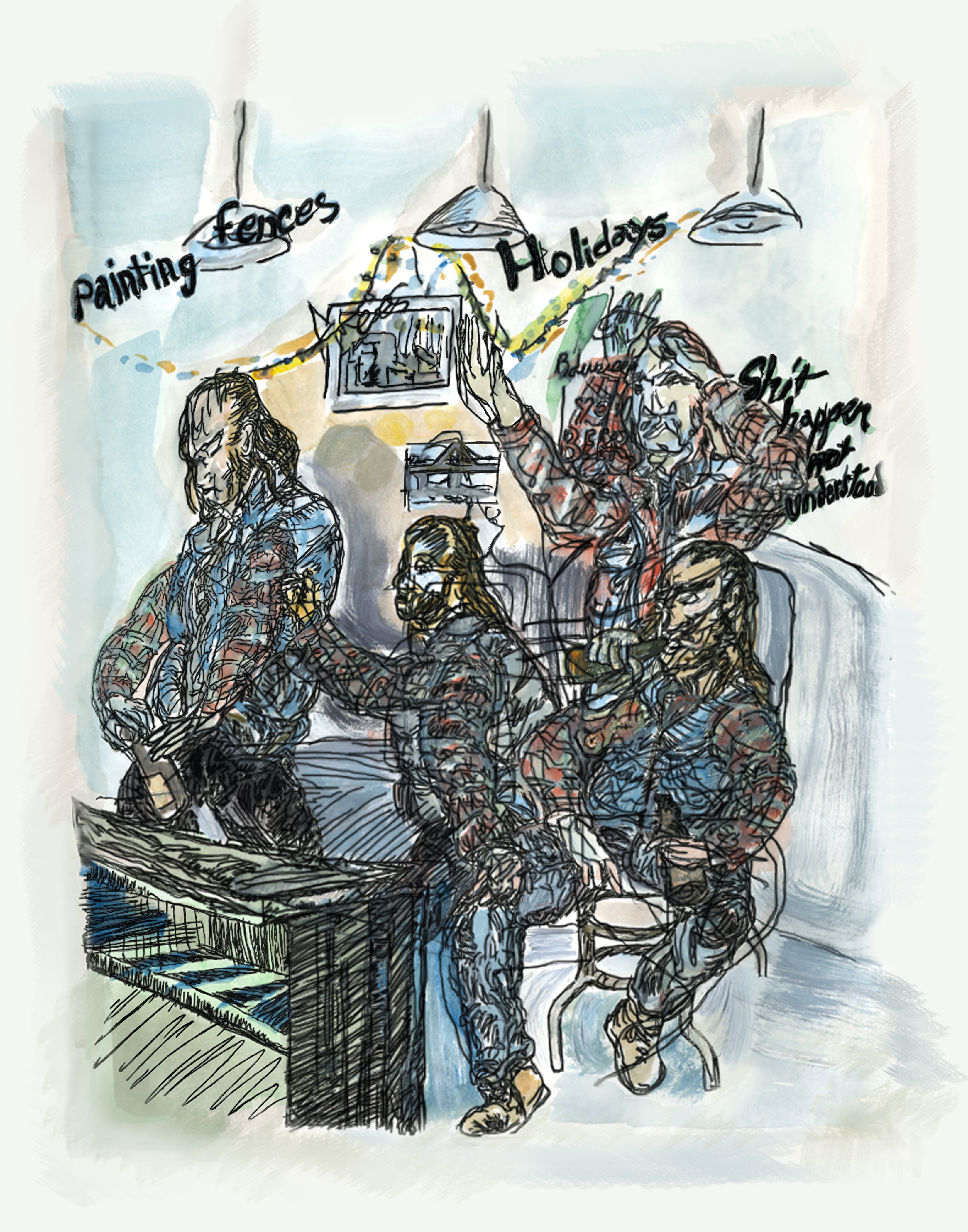
When actors show interest in obtaining a print, Chuck's encouraged to further develop his sketches into completed works, like the sketch here for Philadelphia actor Ross Beschler, "Cost of Living." These pieces become portraits that resonate with artists who see themselves reflected in the art. With numerous drawings, often resulting in 12-24 finished pieces per show, the support from his social circles, fellow artists, and friends is invaluable.
Starting in 2016, EgoPo Classic Theater began auctioning Chuck's artwork at their annual end-of-season Gala, and Kun-Yang Lin/Dancers supported the work. Philadelphia Volunteer Lawyers for Artists (PVLA) and Artsi Philly have also supported his efforts. At the PVLA Annual Gala, Chuck created art live and auctioned it to the attendees. In the future, Chuck hopes to do more auctions, add value, and foster collaborations between artists and organizations.
To emerging artists, Chuck advises, "Go to the theater. It’s a place of knowledge, and wealth. I was interested in being there with an audience. At PAFA, we were the audience and the makers, and when I got to the theater, I saw how I needed an audience, and that hook. So, go to the theater!"
By taking a holistic approach and assimilating the audience's viewpoint, his practice demonstrates how the interplay of diverse art forms can inspire new reflections and perspectives. "The audience, artists, and organizations really shaped where I have taken my artwork," he further reflects, emphasizing the interconnectedness of his artistic journey and the broader art community.
As Chuck continues balancing his artistic endeavors and multifaceted roles, he remains committed to capturing the essence of live performances and contributing to artistic discourse.
Follow Chuck on Instagram!
All images courtesy of Chuck Schultz.
Featured Image: Chuck Schultz, Cosette, Les Mis, monoprint
